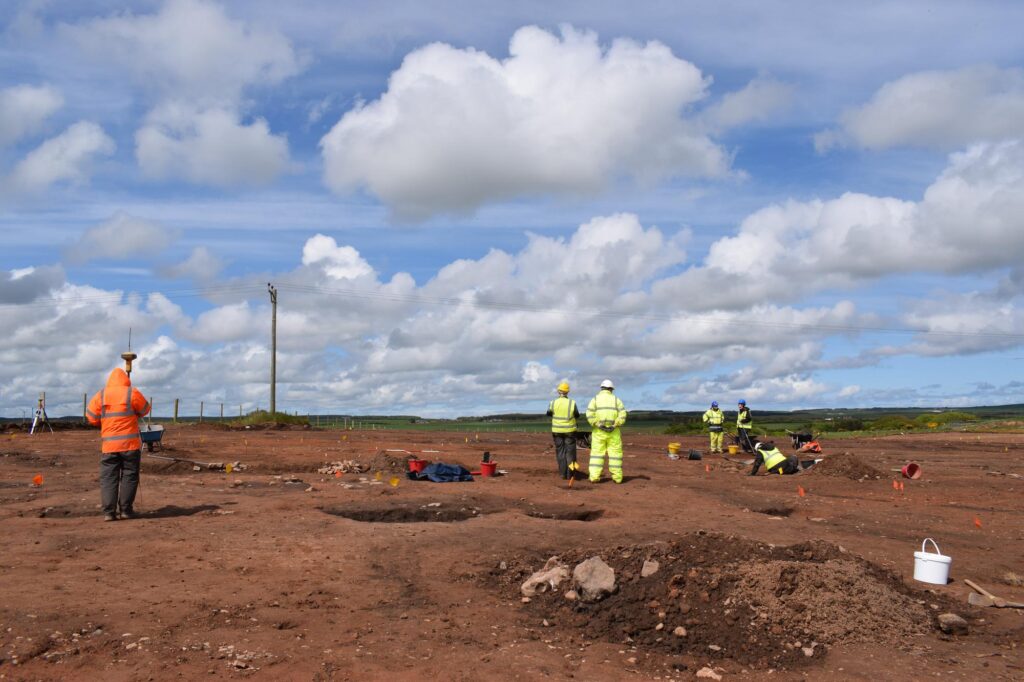Iron Age Site Found in Scotland
The Scotsman reports that researchers have discovered traces of 23 structures dated to as early as 800 B.C. on heavily ploughed land in eastern Scotland, near the coast of the North Sea, ahead of a construction project.
The study is now continuing to decide whether the site has a flourishing domestic settlement or more industrial operation.
Proof has been identified of at least 23 structures on the land, which is due to be developed by Claymore Homes, with some pottery and flint tools also found.

The settlement may be estimated to be from 800 BC to 400 AD with large amounts of charcoal and other organic material now undergoing testing at the archaeology department at Aberdeen University in the search for an accurate timeline.
Ali Cameron, of Cameron Archaeology, first started working on the site in 2017 with the full extent of the settlement only now coming to light.
She said a find of such a scale was ‘very exciting’ with ‘a lot of hope’ pinned on the analysis of the samples.
She said: “ There are at least 23 structures there which date to the Late Prehistoric period. Some of the ditches were full of charcoal. We have more than 300 samples so we are going to get a really good picture of the dating.”
She added that the organic remains would help build up an understanding of what the site was being used for.
The archaeologist said: “If you get a lot of grain, you might be looking at a domestic site, for example. It might help determine what was happening in a particular building.
“We are pinning a lot on those samples.
“It could be that this was more of an industrial site. There are so many buildings over a huge area. We have got a lot more work to do.”
Ms Cameron said the land had been ‘so heavily ploughed’ that only a handful of artefacts had been found. She said there was little-known activity in the Cruden Bay area around the same time the settlement is thought to date from.
“The site is higher up and you get this fantastic view over the bay. It’s a great location and you can imagine why people wanted to settle there,” Ms Cameron added.
The site is due to be developed by Claymore Homes.
Ms Cameron said the company had been ‘fully supportive’ of all the archaeological works with the firm paying for the excavation, the analysis of finds, processing of samples and the publication of a report in an archaeological journal.
Mike Shepherd, of the Port Errol Heritage Group, told the Press and Journal: “You sometimes get told in Cruden Bay that it never gets boring here and the history of the place shows that this has been true for a very long time.
“The discovery of a prehistoric settlement here is astonishing. Just consider it: an ancient village which has been forgotten for centuries and is now finally, gradually coming to light.
“There will be a great curiosity to find out more about these ancient people who long ago made our place their place.”





